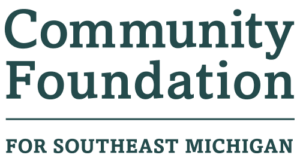
Josie Tipton, PEDALS Coach
I am a lover of children’s literature. I have been my entire life.
I worked in the children’s library and on a bookmobile in High School as a storyteller. Even books that most would shy away from, I can find things that are common ground to share or highlight that can be helpful or can be used to compare the past with present day.
One example is Blueberries for Sal. Many might think that that book would go against all DEI tenets, but I would caution teachers to look critically at older books. Just because a book shows different things: mom staying home and taking care of a child, cooking, etc. We can look at the illustrations and compare how our homes might look different today. We can focus on how much that mother must love her child because she takes such good care of them. How are the mother and the mama bear alike? Below we will highlight some other areas where we can look at our collections critically, to make sure we don’t unintentionally malign any of the populations represented in our classrooms. Doing so would risk damaging the relationships we work so hard to build in the preschool classroom.
According to the Coaching for Diversity, Equity, Inclusion, Accessibility and Belonging in Early Childhood book by Reinking and Thigpen, teachers should be mindful of the types of books that are chosen for their class library. They suggest we become aware of unintended consequences like microaggressions or implicit biases that we don’t want to introduce into our classrooms.
Several things to consider include as listed in the book:
-
- Check the storyline (are there biases, who are the central figures, who causes or resolves the problems, does class collection feature variety of people as “doers”?)
- Look at messages on varying lifestyles (Are negative judgements made or implied about ways of life that are not the norm or differ from dominant culture? Does the setting reflect current life or past assumptions about life.)
- Consider the impact on children’s self and social identities. (Do books reflect messages that are uplifting or make children feel inferior based on race, gender, income, able-bodied, or family structure.)
- Watch for “loaded” words. (Words or phrases that lump “all men” meaning women, children, etc., savages, primitive, backward, etc. Avoid words that demean anyone.) Try to flip phrases commonly gendered like “Firemen” to “firefighters” or “Policewoman” to “Police Officers”.
While we all love sharing books with our students, it is still important to follow the best practices on topics appropriate for the preschool classroom and for their developmental levels.

